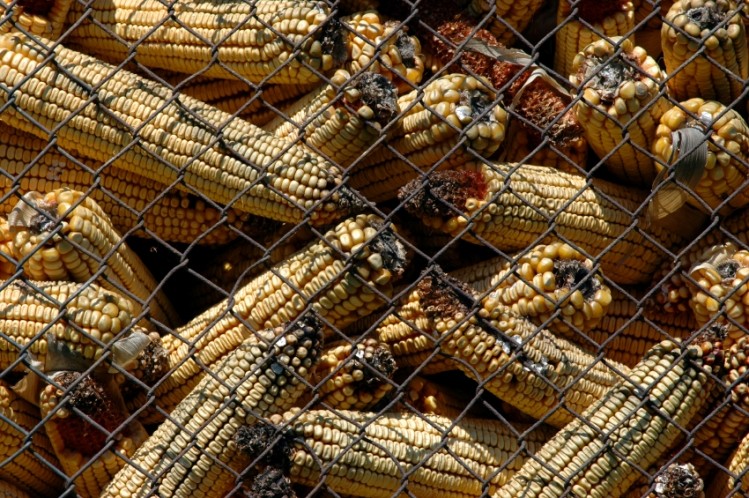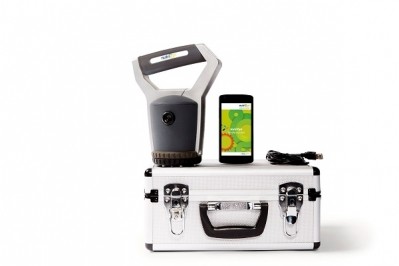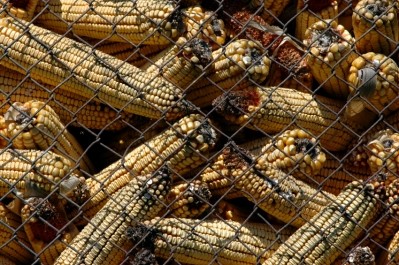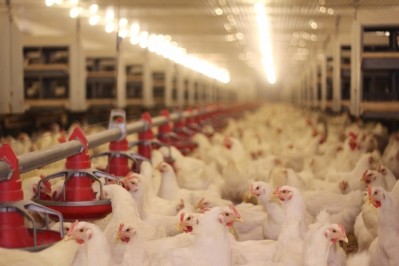Trouw launches mycotoxin advisor to aid in complete feed design

Trouw Nutrition launched a new aspect of its mycotoxin risk management program earlier this summer, called the NutriOpt Myctoxin Advisor. The program is designed to work within the risk assessment system, the company said.
The NutriOpt program offers recommendations for final feeds, the company said. Users analyze feed ingredient samples, upload results to a global database, which can compare multiple ingredients for a finished feed and, if necessary, offer suggestions to improve feed formulation.
“At Trouw Nutrition we have a rapid testing available, Mycomaster. You have 15 minutes and you get results,” said Ellen Van’t Veer, product manager in mycotoxin analytical services. “What we’ve added to the test is that the result is uploaded into a global database and for the user or feed miller they have immediate access to the data.”
The program also offers information about what risk the levels could present to different animal species, she told FeedNavigator. “The levels that are tolerated for the animals and the risk is calculated for the animal health and performance impairment,” she added.
The program offers information from mycotoxin presence levels globally, and is available for producers on a global scale, she said.
A portion of the program, the expanded rapid test, also assesses levels of particular mycotoxins individually, said Van’t Veer. But the test can be run several times in a row to look for different mycotoxins predominate in specific samples in an area.
“A lot of research is looking into the scope of mycotoxins and how they affect [animals]” she said. “There’s a lot of attention on the masked mycotoxins or forms of the known mycotoxins – for Trouw Nutrition it is important to look into the research and the base toxicity and risk to the animals. That’s what we’re focusing on.”
Risk conditions and mycotoxin presence
There are several major times to test for mycotoxin presence in feed or grains, said Pedro Caramona, global program manager for mycotoxin risk management with Trouw Nutrition. These include assessing grains already in storage when a new harvest starts, condition of the crop in the field before harvest and during new crop storage conditions.
Concerning pre-harvest conditions include drought and insect damage, he said.
“Drought is one that we‘re very attentive to during the silking in corn, or heading to flowering stage in wheat,” he told us.
Drought conditions can put stress on a plant and result in reduced grain fill, which allows more opportunity for mold growth, he said. During those periods, it can be important to watch for mycotoxins like aflatoxin in corn and fusarium or deoxynivalenol (DON) in wheat.
“This year we’re looking in the US at South and North Dakota, Ohio, Nebraska – because we have hot and dry conditions for aspergillus to grow,” said Caramona.
However, mycotoxin-producing molds like fusarium may be more common if a stressed feed crop has rain directly before or during harvest, he said.
Looking at conditions and potential for crop damage offers information to help predict what molds could be growing and what types of mycotoxins could be relevant for the crop, he said.
“We need to try to arm ourselves with information to guide us on what may be happening with mycotoxins in storage,” he said. Aspergillus and penicillium are considerations when there are poor storage conditions.
Some types of mycotoxin producing mold also can increase during storage if conducive conditions occur, said Van’t Veer. “Mold can grow during storage when there are temperature differences and there is condensation in silos [it] can cause locally very high amounts of mycotoxins,” she added.
For feed mills it can be important to continuously monitor raw materials going into storage, she said. Producers should remember that there could be variation in the presence and distribution of mycotoxins throughout a feed ingredient shipment and that to get a good estimation frequent sampling is needed.
That information can allow a mill or feed manufacturer to take steps to address mycotoxin presence, she said.
The ability to assess the levels of multiple types of mycotoxins has improved, said Caramona. “Improving how fast we can get access to data and to have a complete picture of what is happening in a certain year or region, that is relevant to provide sound information to our customers,” he added.
The company now shares that information and continues to grow its mycotoxin database, he said. “We provide as rapid a response as possible and provide information on the corrective practices that need to take place in a certain area.”
Mitigation options
There can be multiple steps taken to address the presence of mycotoxins in feed or feed grains, said Caramona. Although the process starts with looking at levels in grains produced or imported.
Improving real time access to risk information may improve the process earlier, including the management of raw materials, he said.
“We try to help our customers to create strategies to alleviate the challenge,” said Caramona. “The levels that we’re seeing are not drastic or clinical levels, but would impact animal performance and economic performance of the production system.”
“It’s important that we start as early as possible [even] on the port of entry,” he said. “Secondly we look at the management of those grains in storage [and by] diverting grains to species who would be less sensitive.”














